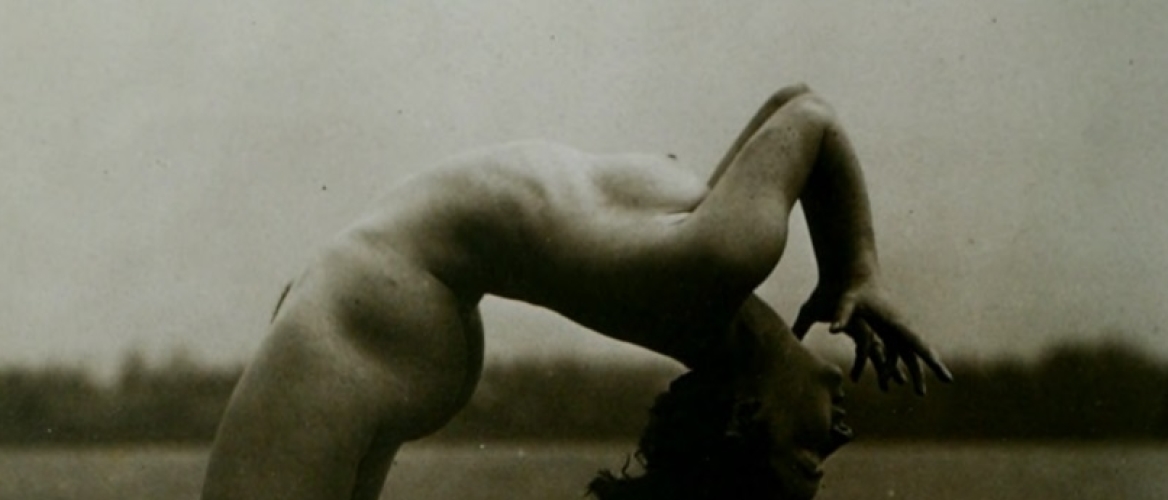
Naturism and nudism are often interchangeable terms, however, nudists put an accent on the body question, while naturists tend to live in harmony with the environment. When we speak of the history of nudity in Europe, the most contrasting periods were the Victorian era in England with its’ bathing machines on the beaches and the European 1920s with their liberation from the previous social conventions. Nudism and naturism have a rich history of interacting with many ideologies through the few last centuries.

Fig. 1. Gerhard Riebicke, 1930. Nude woman as Diana, who was a deity of hunt.
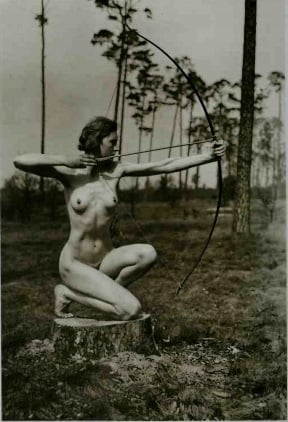
Fig. 2. Gerhard Riebicke, 1925
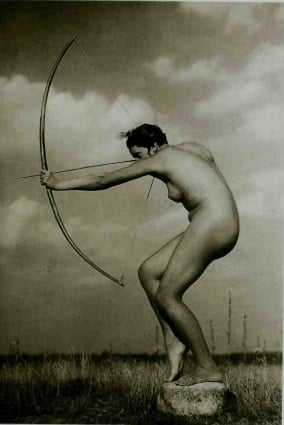
Fig. 3. Gerhard Biericke, 1925

Fig. 4. Gerhard Biericke, 1925
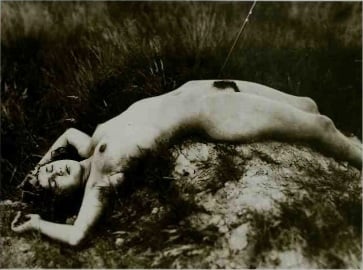
Fig. 5. Gerhard Biericke, 1925
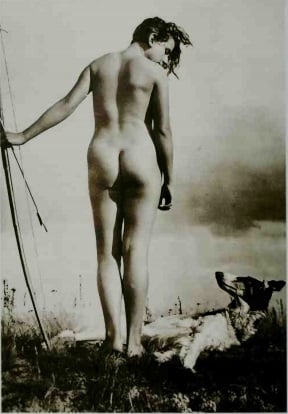
Fig. 6. Gerhard Biericke, 1925
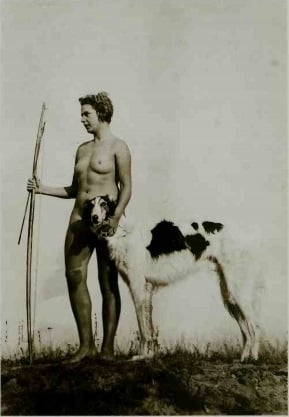
Fig. 7. Gerhard Biericke, 1930
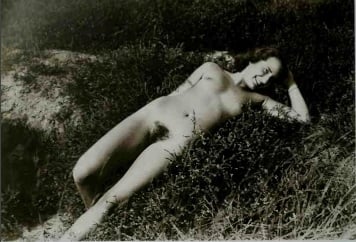
Fig. 8. Gerhard Biericke, 1930
Philosophical Ground
The theoretic basis of naturism appeared during the Enlightenment when, according to Wiki, restrictions against nudity, ironically, grew as well. Both naturism and nudism are connected with our longing for nature and natural life. The opposition of nature and civilization was the central point of the philosophy of Jean Jacques Rousseau (1712-1778). His cult of nature was meant to show the artificialness of modern human society and human relations. From the point of view of Rousseau, the natural man was pure, and only the civilization’s tyranny spoiled him and turned him into what he is now. This theory corresponds to religious and mythologic views, according to which the first people dwelled in heaven.
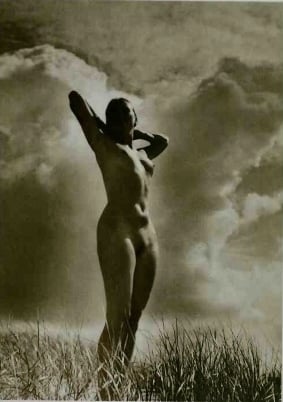
Fig. 9. Heinz von Perckhammer, 1935
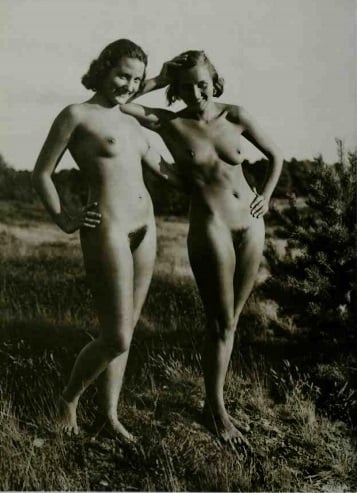
Fig. 10. Gerhard Riebicke, c. 1930
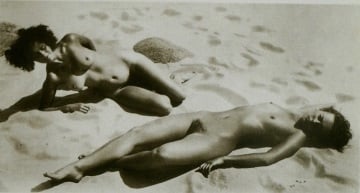
Fig. 11. Anonymous, c. 1930
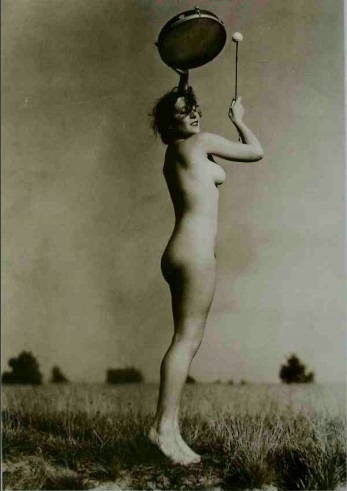
Fig. 12. Gerhard Riebicke, c. 1935
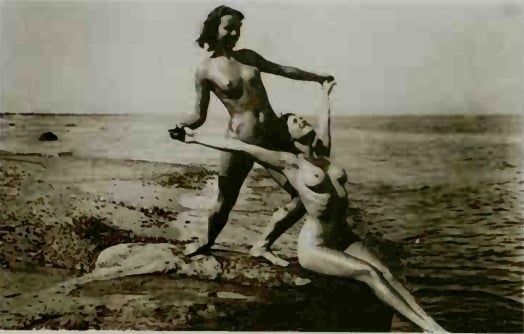
Fig. 13. Anonymous, c. 1930
Between Health and Heaven
The 19th century brought in some new issues such as urbanization and industrialization. People began to worry about their health more than about their moral state. So, naturism, nudism, vegetarianism, and many radical reforms of different aspects of life began to emerge.
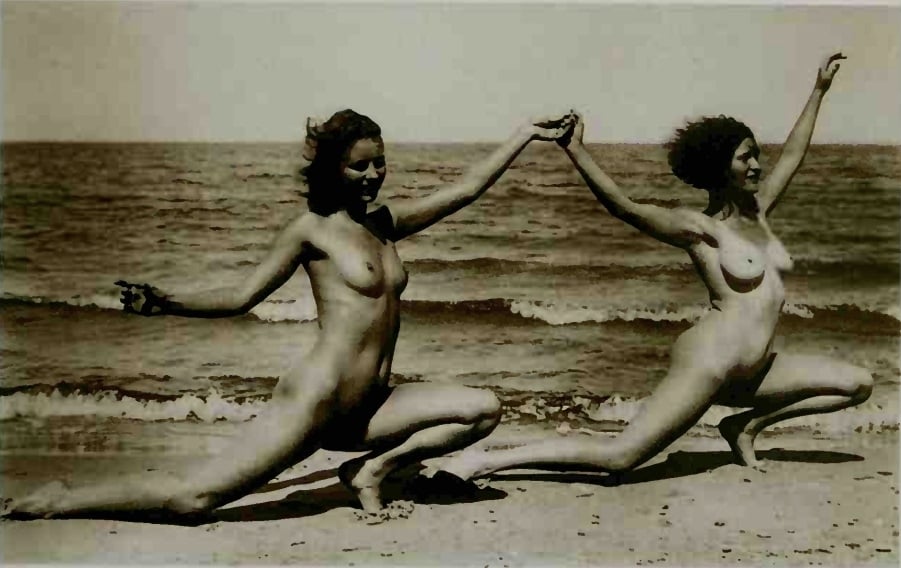
Fig. 14. Anonymous, 1930

Fig. 15. Gerhard Riebicke, c. 1930
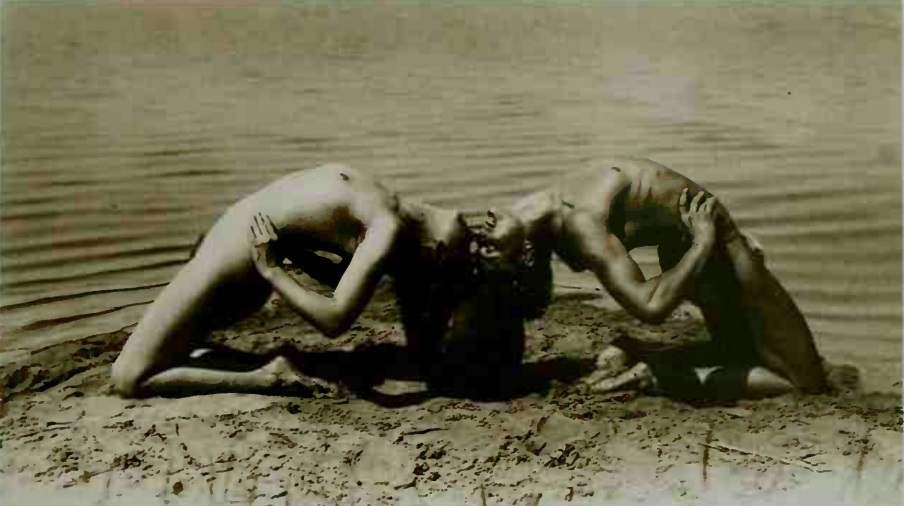
Fig. 16. Gerhard Riebicke, c. 1930

Fig. 17. Gerhard Riebicke, c. 1935
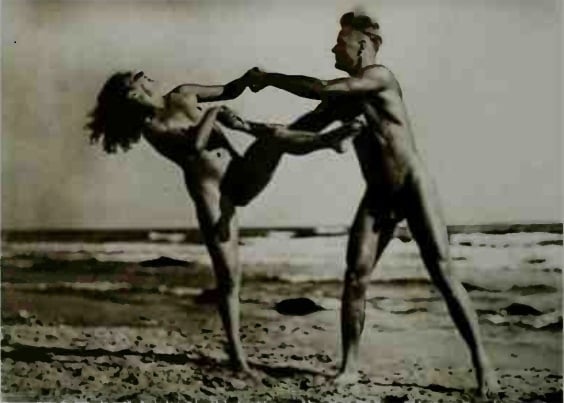
Fig. 18. Anonymous c. 1935
The Pioneer of Nudism in Germany
Heinrich Pudor (1865-1943) was the founder of German nudism. Being adherent to Lebensreform ideas (the social movement in Germany of those times for turning back to nature), Pudor published books on naturism, nudism, and vegetarianism in the 1890s. He also was a director of the Royal Conservatory in Dresden like his father and promoted the idea of performing only German music. Although Pudor had radical nationalistic and anti-Semitic views, he criticized the cult of Hitler, so his writings were banned by Nazi.
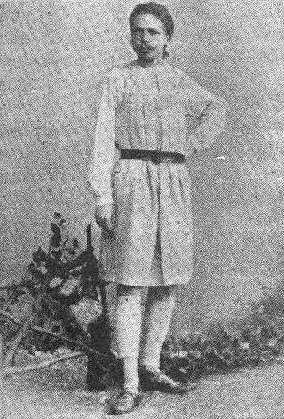
Fig. 19. Heinrich Pudor (Wikipedia.org)
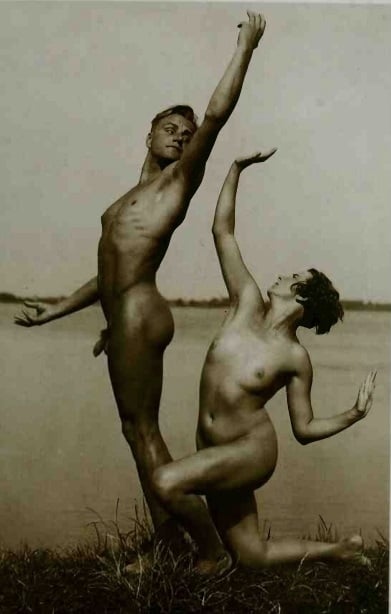
Fig. 20. Gerhard Riebicke, c. 1935
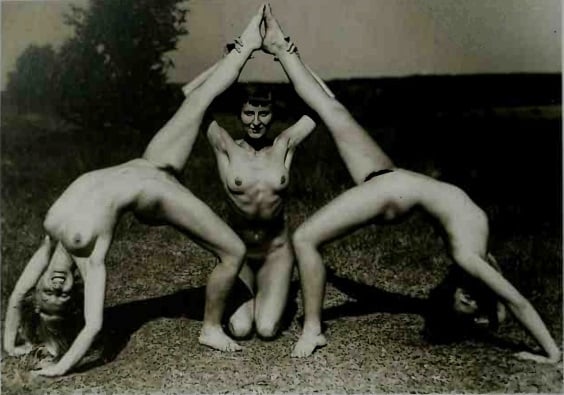
Fig. 21. Anonymous, c. 1935
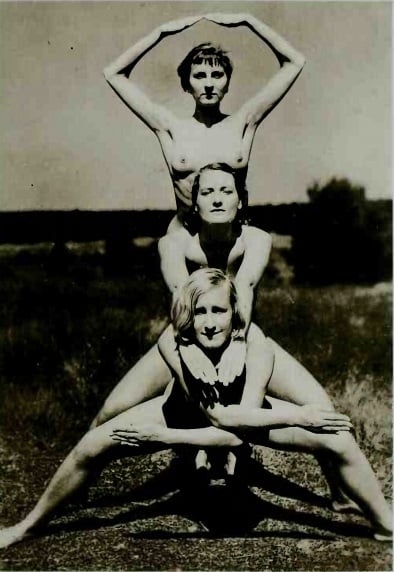
Fig. 22. Anonymous, c. 1935
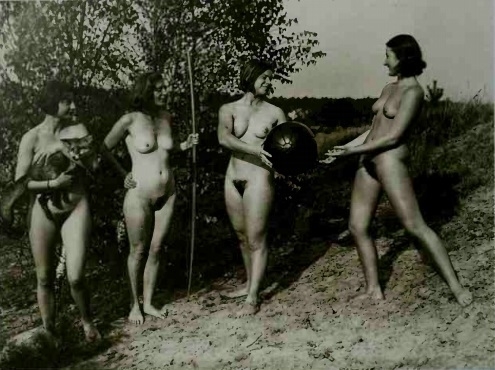
Fig. 23. Anonymous, c. 1935
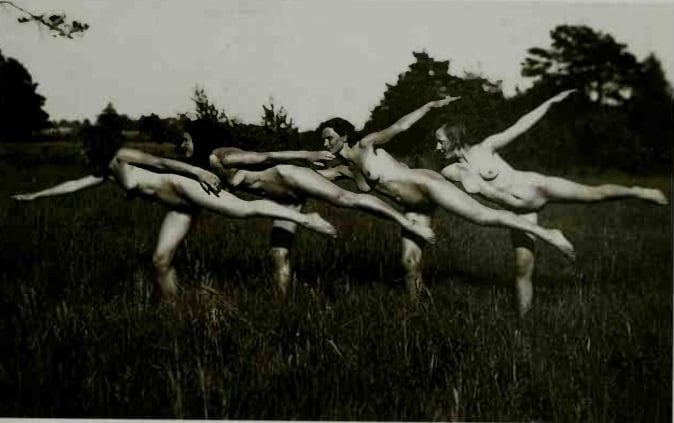
Fig. 24. Anonymous, c. 1930
Nudism and Fascism
Despite the feeling that the word “naked” is supposed to mean “purified from discrimination and prejudices,” some nudist organizations didn’t allow opulent and disabled people to participate. According to Maurice Parmelee, nudism was a way to get “more beautiful mankind.” This discriminative side of nudism is totally obvious in esthetically perfect images illustrating the article. People in the shots embody almost unnatural health and harmony. Paradoxically, nature lacks human perfectionism and produces lots of diseased or misshaped creatures that are far from the abstract ideal.
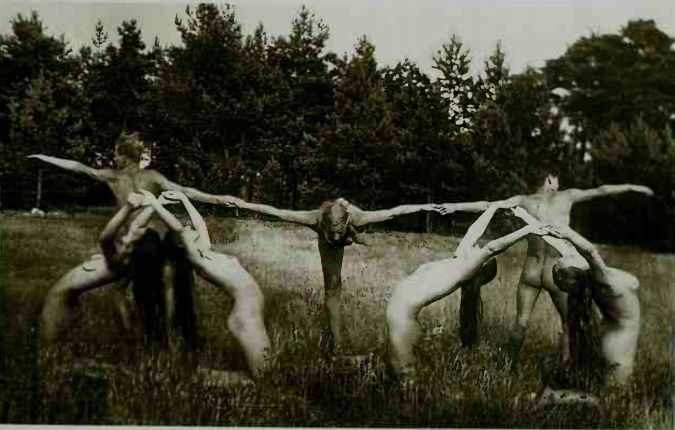
Fig. 25. H.B., c. 1925
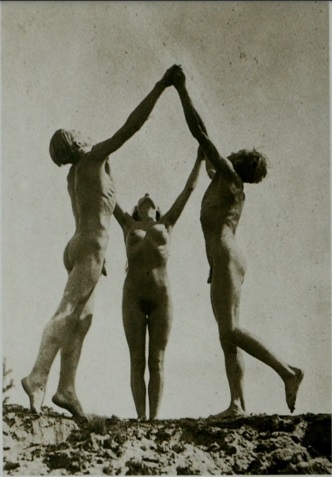
Fig. 26. Anonymous, C. 1925
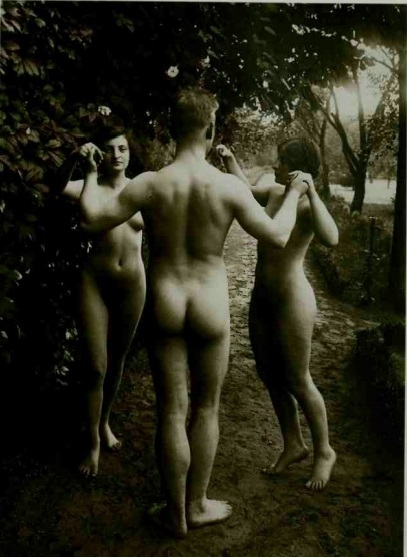
Fig. 27. Anonymous, 1920

Fig. 28. Anonymous, c. 1930
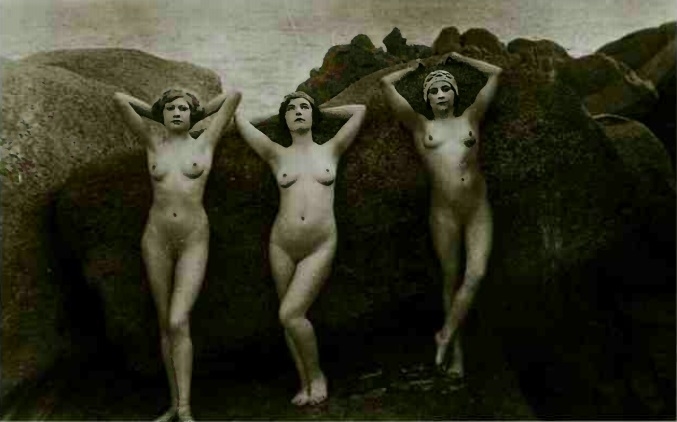
Fig. 29. Anonymous, c. 1930
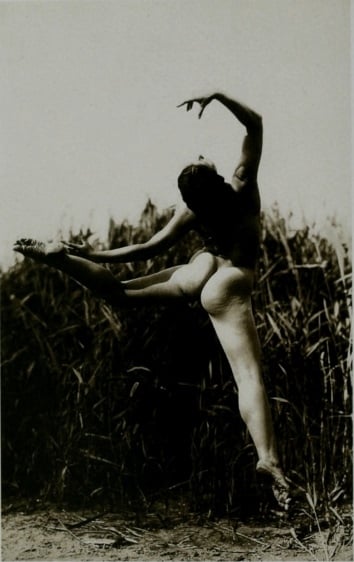
Fig. 30. Anonymous, c. 1930
Modern Nudism
Contemporary nudists, unlike their predecessors, agitate for personal comfort and acceptance of one’s body. They try to neutralize modern obsession with certain parameters of beauty. Each body is individual with its’ own imperfections. As one can notice, nudism is a very heterogeneous movement. On the one hand, it could be a protest of communists against capitalism. On the other hand, it contributed to eugenics and nationalism, being rather an aristocratic movement of physical perfection. The denial of human civilization was rooted deeply in what it tried to elude. So, nudity is not a state of authenticity but an instrument that can serve any ideology, especially when the difference between these ideologies is uncertain.
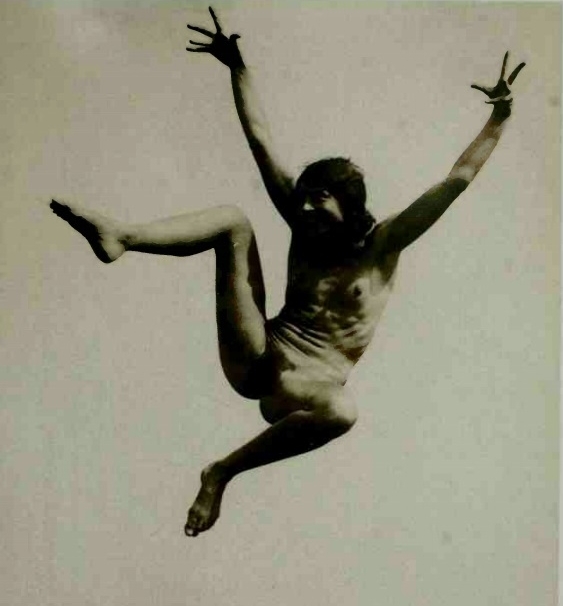
Fig. 31. Gerhard Riebicke, 1935
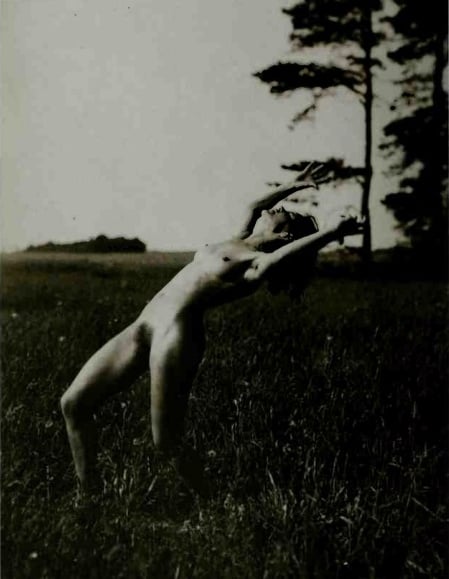
Fig. 32. Anonymous, c. 1930
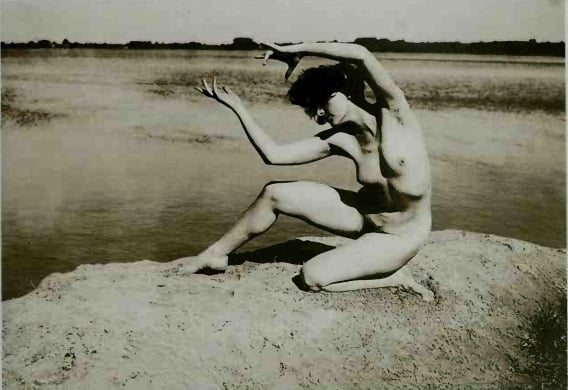
Fig. 33. Gerhard Riebicke, c. 1930
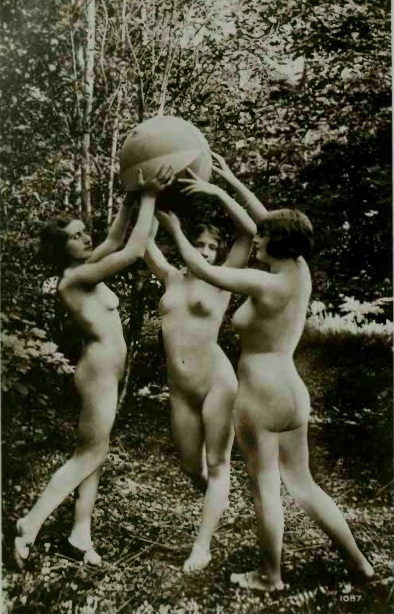
Fig. 34. Anonymous, c. 1930
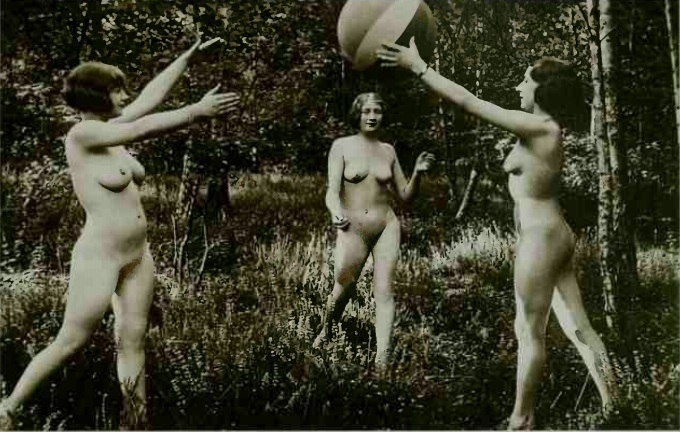
Fig. 35. Anonymous, 1930
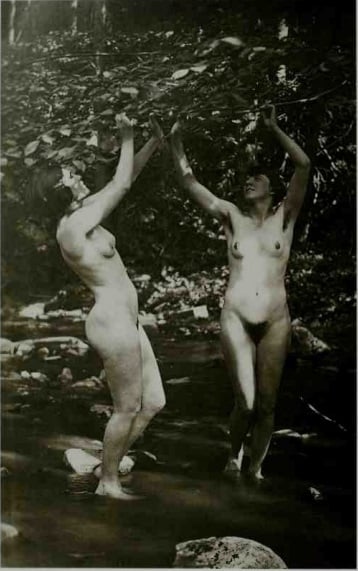
Fig. 36. Anonymous, c. 1925
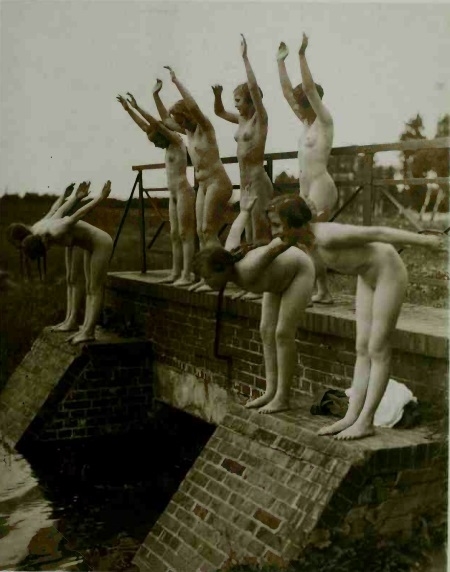
Fig. 37. Anonymous, 1925
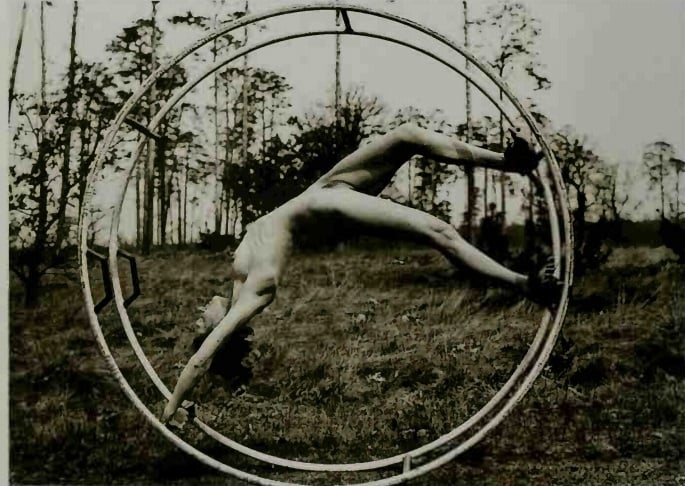
Fig. 38. Anonymous, c. 1930

Fig. 39. Kurt Reichert, c. 1935

Fig. 40. Gerhard Riebicke, c. 1925

Fig. 41. Cerhard Riebicke, c.1925
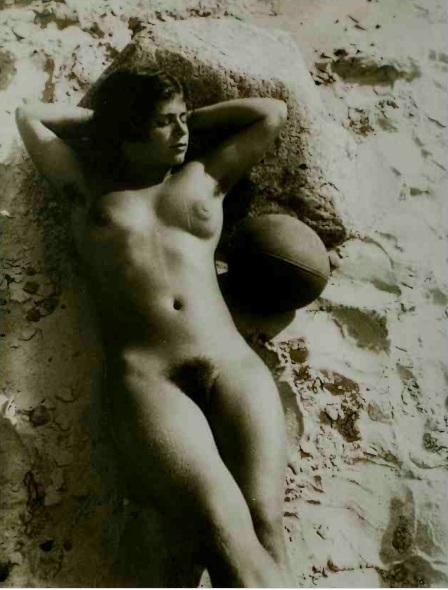
Fig. 42. Anonymous, c. 1935
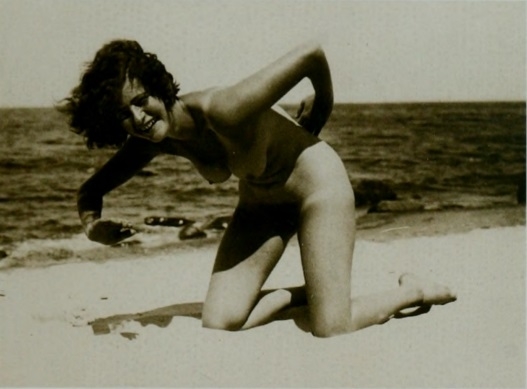
Fig. 43. Anonymous, c. 1935

Fig. 44. van Jan, c. 1920
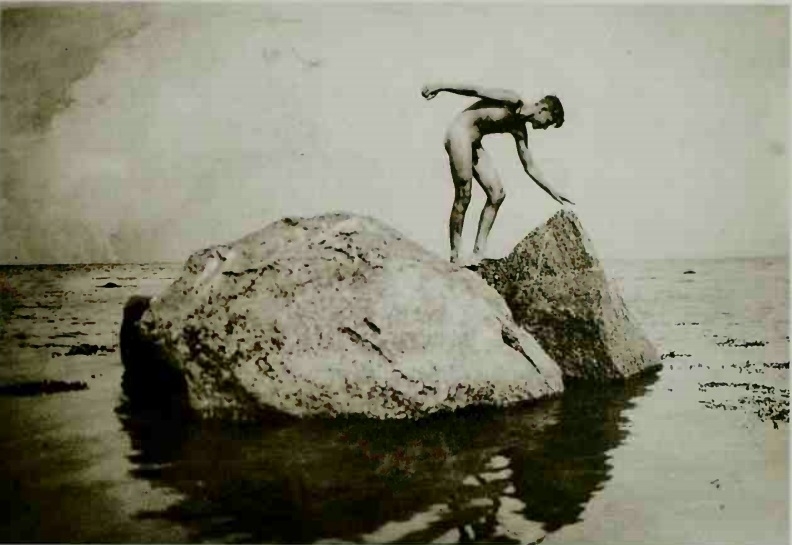
Fig. 45. Max Franz Nielsen, c. 1925
Click HERE to check out an article on the fashion photographer Helmut Newton and his flirtatious nudes….!!
Photographs: “1000 Nudes: Uwe Scheid collection”, 1994
Sources: Wikipedia.org, encyclopedia.com
Do you think this is a suitable topic for this site? Leave your reaction in the comment box below…!!
